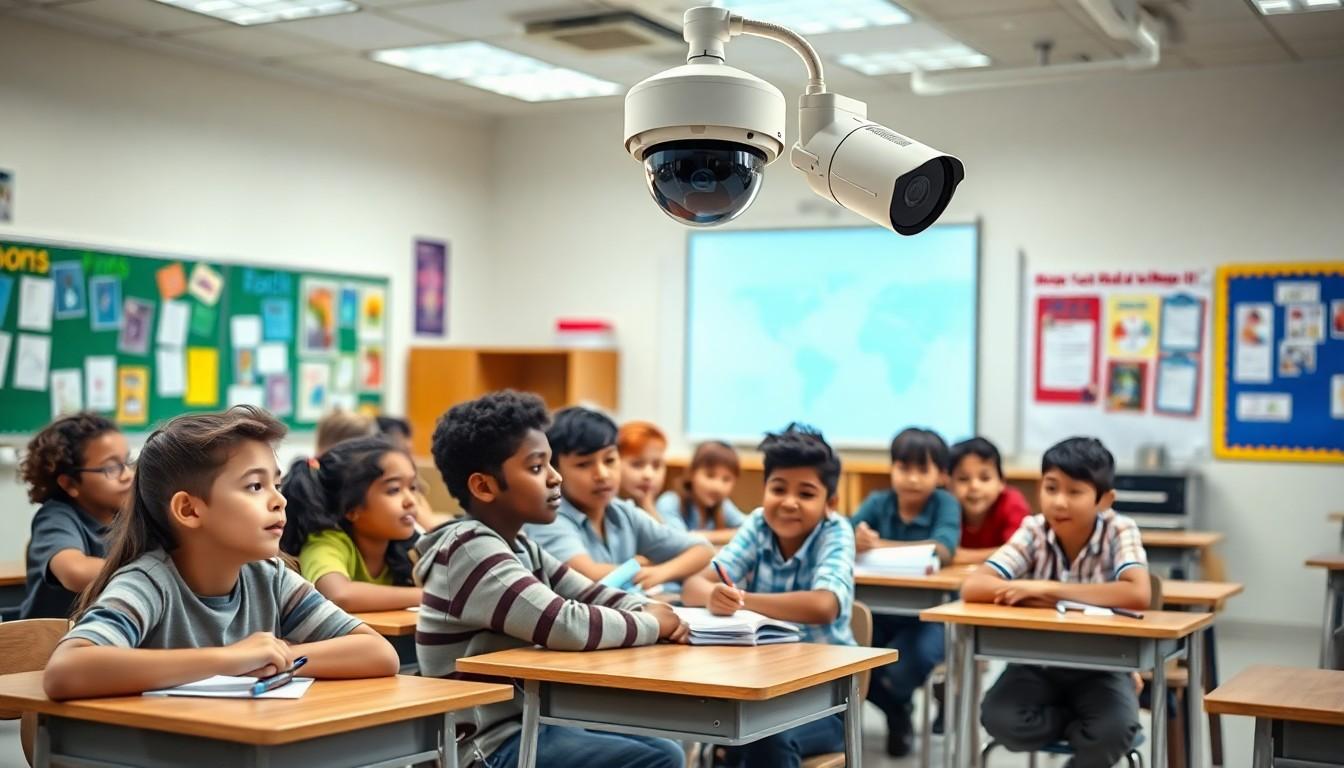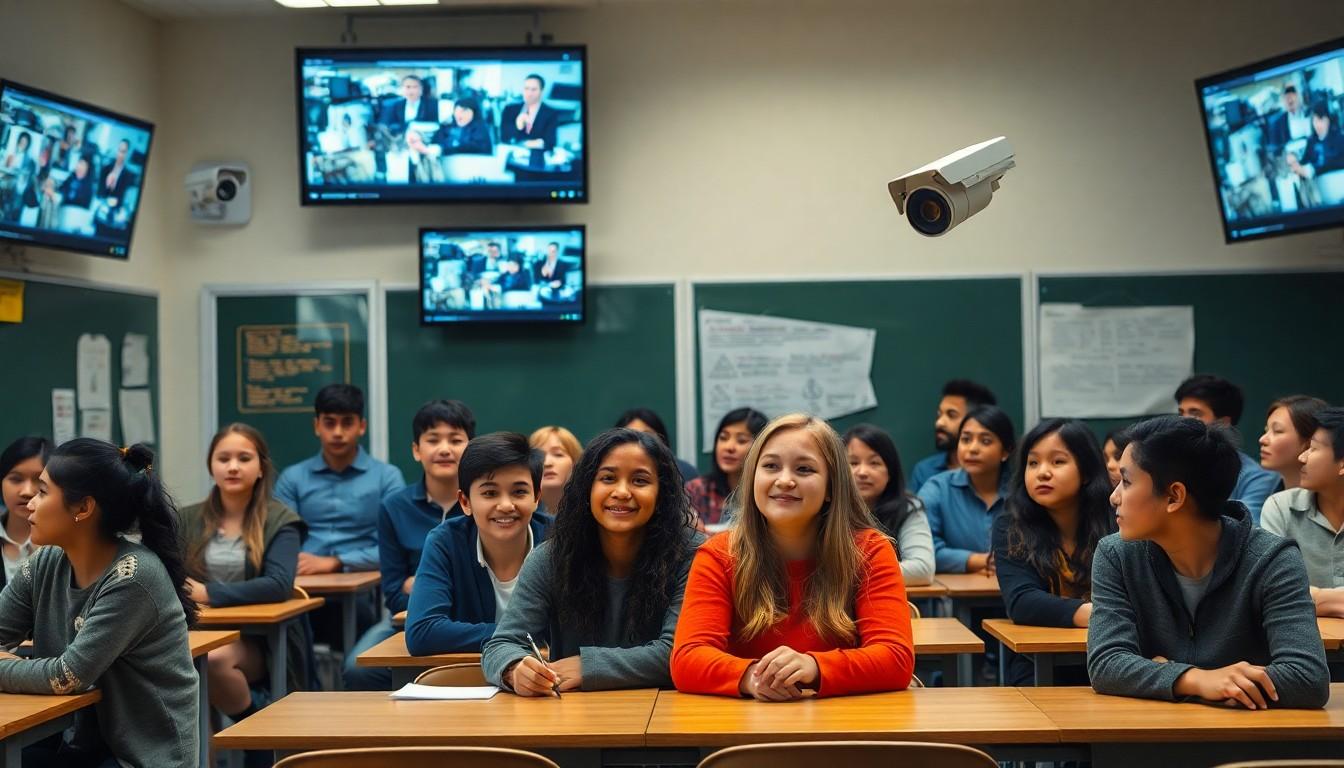Phone:
(701)814-6992
Physical address:
6296 Donnelly Plaza
Ratkeville, Bahamas.

In today’s world, keeping schools safe is no laughing matter, but that doesn’t mean we can’t have a little fun while doing it. Education security systems are like the superhero capes for campuses, swooping in to protect students and staff from potential threats. With technology evolving faster than a student can finish a pop quiz, these systems are more crucial than ever.
Imagine a school where every door is locked tighter than a secret recipe and cameras are watching like hawks. Education security systems not only provide peace of mind but also help create an environment where learning can thrive. As we dive into the nuts and bolts of these systems, it’s clear that investing in safety is the smartest decision schools can make. After all, a secure school is a happy school, and who doesn’t want to be happy?
Education security systems protect students and staff by creating a safe learning environment. These systems utilize advanced technology to deter threats and respond to emergencies.
Education security systems encompass a range of measures designed to keep schools safe. Such systems include surveillance cameras, access control measures, and emergency communication tools. Their importance cannot be overstated, as they serve to prevent violence and ensure a rapid response during incidents. By investing in these systems, educational institutions foster an atmosphere where learning can thrive without fear.
Several key components form the foundation of effective education security systems. Surveillance cameras monitor school premises to deter potential threats. Access control systems restrict entry to authorized individuals, enhancing safety. Emergency communication systems enable immediate notifications to staff and law enforcement during crises. Training programs for staff and students ensure preparedness for various situations. These components work together to create a holistic approach to security in educational settings.

Education security systems employ various strategies to safeguard students and staff. These strategies encompass physical and digital measures designed to ensure a secure learning environment.
Physical security measures include surveillance cameras, fencing, and controlled access points. Surveillance cameras deter vandalism and monitor activities on campuses. Fencing around school perimeters adds an additional layer of protection. Controlled access points restrict entry to authorized personnel only. Security personnel may also patrol grounds to enhance safety. Intrusion detection systems help notify authorities of unauthorized access. Together, these measures create a safer atmosphere for educational institutions.
Digital security measures focus on protecting sensitive information and systems. Network firewalls defend against cyber attacks by blocking unauthorized access. Antivirus software scans for malicious software to keep systems safe. Data encryption protects student and staff information from breaches. Regular software updates maintain security protocols against new threats. Training programs educate staff and students on cybersecurity best practices. These digital protective layers are vital to maintaining a secure educational environment.
Education security systems significantly enhance the overall safety of students and staff. Such systems provide a structured approach to protecting learning environments from potential threats.
Enhanced safety measures create a secure atmosphere conducive to education. Surveillance cameras monitor school grounds, deterring criminal activity. Access control systems restrict entry, ensuring only authorized individuals can access sensitive areas. Emergency communication tools facilitate rapid notifications during critical situations. Training programs further equip staff and students to respond effectively in emergencies. Together, these elements cultivate a safer school environment where focus remains on learning.
Protection of sensitive information is essential in today’s digital landscape. Network firewalls and antivirus software safeguard against cyber threats. Data encryption secures confidential student and staff records, making unauthorized access difficult. Regular software updates maintain system integrity, preventing vulnerabilities. Educating staff and students on cybersecurity best practices enhances this protection. Implementing these measures fosters trust and ensures a secure educational environment.
Several challenges threaten the effectiveness of education security systems in schools. Budget constraints often limit the ability to implement comprehensive security measures.
Funding for security systems frequently falls short of expectations. Schools struggle to allocate sufficient resources for advanced technologies like surveillance cameras and access control systems. Limited budgets may prioritize other educational needs over security, compromising student safety. Many institutions face the challenge of integrating security solutions with existing infrastructure, requiring additional financial investment. When financial support decreases, the quality and scope of security plans often diminish, leaving gaps that can endanger students and staff. Therefore, establishing clear funding strategies is crucial to ensuring robust education security systems.
Implementing new security measures often encounters resistance from stakeholders. Teachers and staff frequently express concerns about privacy or the disruption of educational activities. Some fear that increased surveillance may lead to a negative atmosphere within schools. Transitioning to new protocols may require extensive training, which can be met with reluctance. Change management plays a pivotal role in successfully integrating security systems into everyday school life. By fostering open communication, school leaders can address concerns and encourage support, ultimately enhancing the effectiveness of education security systems.
The landscape of education security systems continues to evolve rapidly. Innovations in technology and policy shape the future of school safety.
Integration of advanced technologies becomes increasingly vital in education security systems. Artificial intelligence (AI) enhances surveillance cameras, allowing real-time threat detection and analysis. Access control systems utilize biometric identification, enhancing security by ensuring only authorized users gain entry. Additionally, mobile applications provide immediate access to emergency communication tools, facilitating swift alerts and responses. Furthermore, data analytics play a crucial role in identifying patterns of suspicious behavior, enabling preemptive measures. By embracing these technological advancements, schools can create a secure environment that effectively mitigates risks to students and staff.
Policy developments also drive the future of education security systems. Educational institutions increasingly adopt comprehensive safety policies that mandate regular assessments of security measures. New guidelines emphasize the importance of stakeholder involvement, ensuring parents, staff, and students contribute to safety discussions. Enhanced training programs for staff on emergency preparedness become essential, aligning practices with current standards. Moreover, collaboration with local law enforcement agencies enhances communication and responsiveness during emergencies. Updates to legislation focus on funding mechanisms that allocate resources specifically for security improvements. As policies advance, they support the continual evolution of safety measures in educational settings.
Education security systems are essential for creating a safe and conducive learning environment. By integrating advanced technology and comprehensive strategies, schools can effectively protect students and staff from potential threats. The focus on both physical and digital security measures ensures that every aspect of safety is covered.
As schools navigate challenges like budget constraints and stakeholder concerns, prioritizing education security remains crucial. Future trends indicate a shift towards innovative technologies and collaborative approaches, fostering a culture of safety. Investing in these systems not only enhances security but also builds trust within the school community, allowing education to flourish in a secure atmosphere.